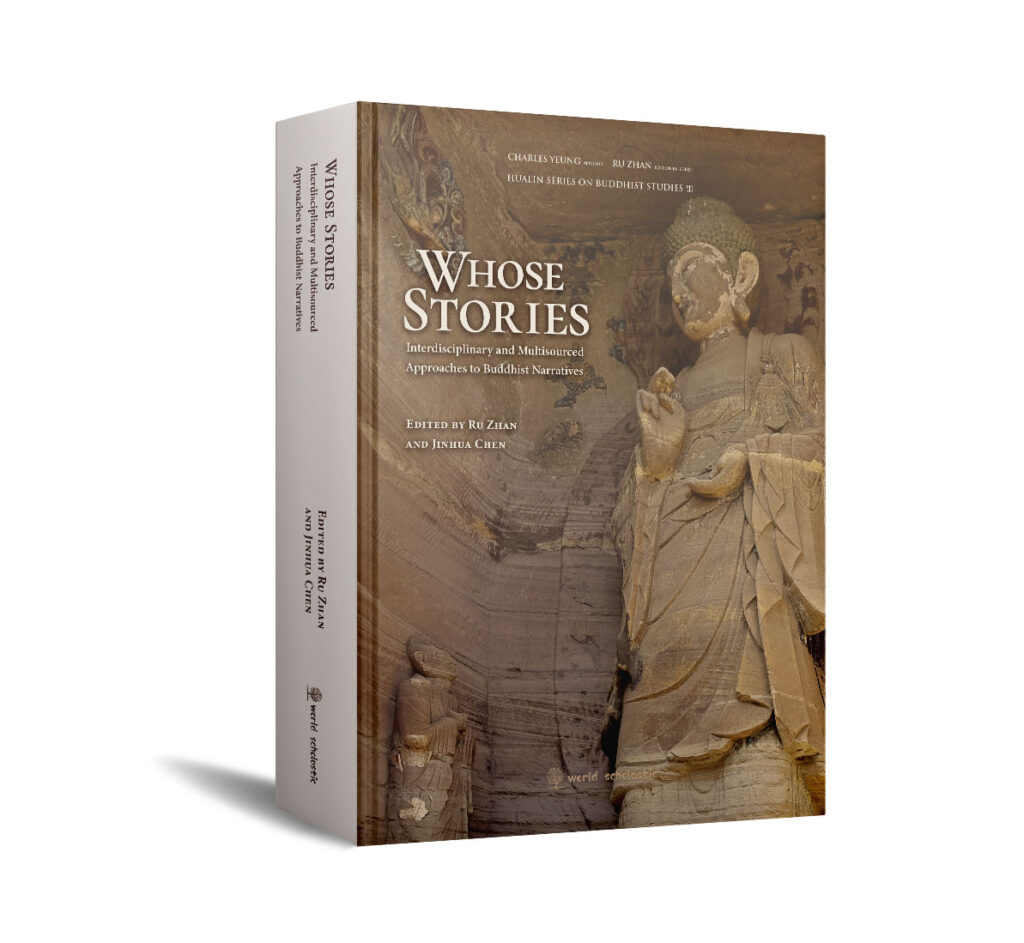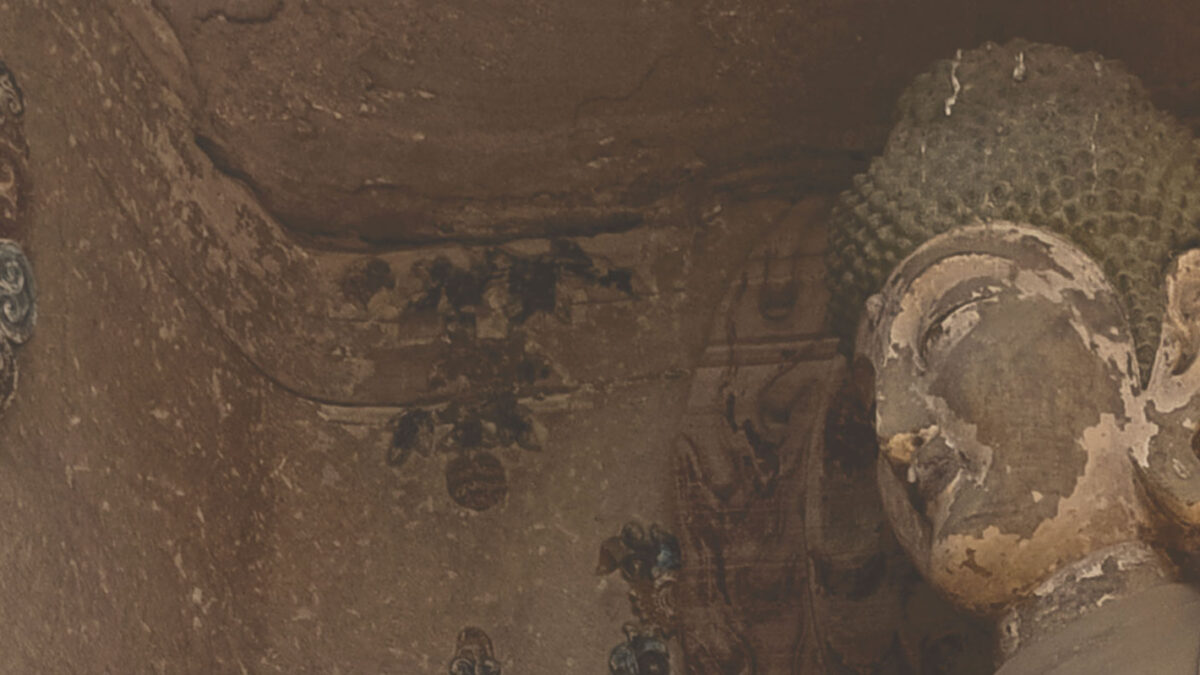Whose Stories: Interdisciplinary and Multisourced Approaches to Buddhist Narratives

Edited by Ru ZHAN 湛如 and Jinhua CHEN 陳金華
Series: Hualin Series on Buddhist Studies VIII
Hardcover ISBN: 978-981-17282-4-2
Publishing Date: 2023
Publisher: World Scholastic Publishers
Pages: 560
Buddhist narratives have their own inherent logics. Buddhist logics (Skt. hetuvidyā; Ch. yinming 因明), with their origins in India, serve deductive and dialectical purposes. They also relate to uniquely Buddhist epistemology, phenomenology, and hermeneutics. Buddhist logics grapple with doctrinal issues at the heart of Buddhism, both as a tool for philosophical queries and as a guiding principle for progressing through the stages of Buddhist praxis. These multivalent functions of Buddhist logics also mean that they have profoundly influenced Buddhist narrative literature.
The Buddhist doctrine of ‘emptiness’ instilled in East Asian literati a penchant to view life as ephemeral and impermanent, a notion that has silently transformed East Asian aesthetics since medieval times. For instance, the Mādhyamika view on the mind-matter relationship, as well as the Chan/Zen view on nature that was influenced by Mādhyamika philosophy, instigated the uniquely Chinese notion of ‘visionary world” or ‘realm’ (Ch. jingjie 境界). The Buddhist emphasis on spiritual attainments also enriched the literary and aesthetic concept of shen 神 (lit. ‘spirit’; ‘mysterious,’ ‘unthinkable’) that had been developing since the Six Dynasties (222–589), while the idea of ‘sudden enlightenment’ (Ch. dunwu 頓悟) and ‘inspiration’ (Ch. linggan 靈感) espoused by the Chan tradition propelled the Chinese aesthetic emphasis on jingjie and enticed many literati to pursue mystical experiences that were of a ‘sense beyond sense’ 味外味.
To more comprehensively explore Buddhist narrative literature and the causal-logical issues associated with it in the context of the larger Buddhist traditions of various regions, two partner universities of the Glorisun Global Network for the Studies of Buddhism—the Research Center for Buddhist Texts and Art at Peking University and the University of British Columbia (UBC)—jointly organised the international conference, ‘“Thus Have I Heard”: Patterns and Logics in Buddhist Narrative Literature’ (‘如是我聞’: 佛教敘事範式與邏輯) from November 25 to 27, 2022.
The conference was embraced with enthusiasm by both domestic Canadian and international scholars, with a total of forty-three papers received. In addition to the keynote speeches delivered by three prestigious scholars—Professor Victor Mair of Pennsylvania University, Professor Wang Bangwei 王邦維 of Peking University, and Professor Monika Zin of Leipzig University—scholars presented and discussed their papers at the conference’s eleven panels.
During the conference, panellists received constructive feedback and, through intense discussion, gained many new insights into their own thoughts on Buddhist narratives. Within a few months of the conference, most of the scholars submitted revised versions of their papers to the conference organisers.
The papers collected here are both those that have been published in journals and those that are now published for the first time. We hope that these high quality papers will further advance the discussion of this important issue at a deeper and broader level.
1. Rehearse the ‘Heard’
-
- 1.1. Evaṃ Me Sutaṃ: Who Heard What?
Peter SKILLING - 1.2. ‘Once upon a Time’—So What? The Importance of Place in Buddhist Narratives
Max DEEG - 1.3. Framing the Path to Awakening: Tibetan Adaptations of the Jātaka Genre
Ulrike ROESLER
- 1.1. Evaṃ Me Sutaṃ: Who Heard What?
2. When the Mobile Meets with the Immobile: Text and Image for Buddhist Narratives
-
- 2.1. Maitreya, the Saviour?: Enigmatic ‘Mahābodhisatvas’ in Kucha
Monika ZIN - 2.2. The Wall Painting of ‘Siddhārtha Descending on the Elephant’ in Kizil Cave 110
Fang WANG 王芳 - 2.3. Fragrance Offering as a Call for Rescue: The Sumāgadhā / Sumatī Story Illustrated in the Kizil Grottoes
Ji Ho YI 李智浩
- 2.1. Maitreya, the Saviour?: Enigmatic ‘Mahābodhisatvas’ in Kucha
3. Poem and Prose for Praising
-
- 3.1. Early Buddhist Wisdom Literature: The ‘Book with Verses’ (Sagāthāvagga) of the Saṃyutta nikāya
Eviatar SHULMAN - 3.2. Chan With This-Worldly Cares: Hu Pu’an 胡樸安 (1878–1947) and his ‘Matching Hanshan’ 和寒山 Poems
Chin-fung NG 伍展楓 - 3.3. Understanding Chan Kōan As a Literary Genre
Ben VAN OVERMEIRE
- 3.1. Early Buddhist Wisdom Literature: The ‘Book with Verses’ (Sagāthāvagga) of the Saṃyutta nikāya
4. Balls across the Board: Transcultural and Trans-border Nature of Buddhist Narratives
-
- 4.1. Ximing Monastery and the Cultural Inheritance of the Tang Dynasty: Undertakings in Art, Literature, the Compilation of Texts, and Cultural Education
Ru ZHAN 湛如, translated by Michael CAVAYERO 柯偉業 - 4.2. The Vicissitudes of the Story of Therī Paṭācārā: From Early Buddhism to the Mahāyāna
Haoqin ZHONG 鍾昊沁 - 4.3. Parasutraic Narratives and Cultic Repertoire: The Plurality of Afterlife Abode in the Tang Lotus Sūtra Cult
Chiew Hui HO 何秋輝
- 4.1. Ximing Monastery and the Cultural Inheritance of the Tang Dynasty: Undertakings in Art, Literature, the Compilation of Texts, and Cultural Education

